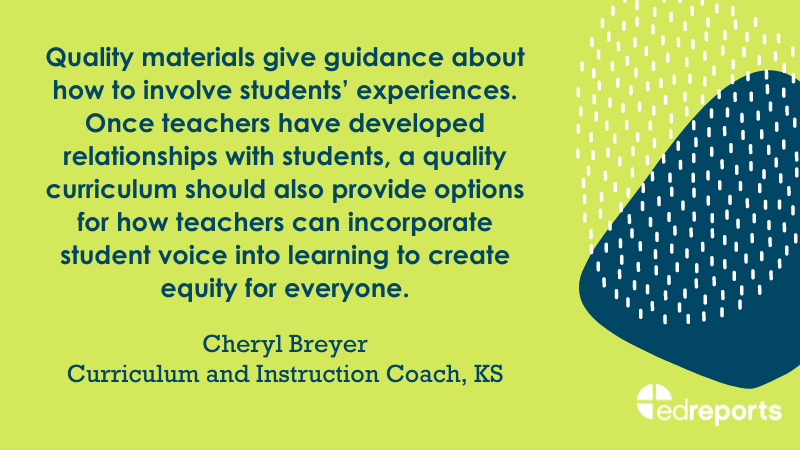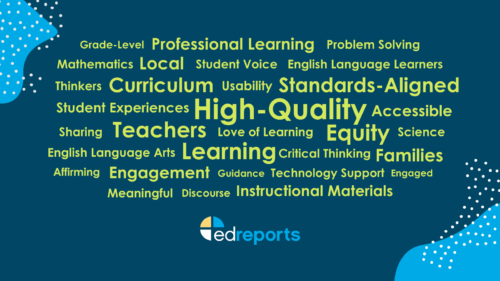EdReports reviewers from around the country share the importance of high-quality curricula that speak to students’ perspectives and lived experiences.
When it comes to instructional materials, EdReports believes that standards alignment is a prerequisite for all students—but it is not the only thing students need to learn and grow. Grade level content is critical, and materials should support teachers and address the needs of local communities. Curricula should be meaningful and engaging to all students, and attention must be paid to diverse representation in authorship, protagonists, and historical perspectives and support a wide array of learners.
This summer, we convened 200 of our educator reviewers from around the country for a virtual Summer Symposium to reflect on what “quality” means when it comes to instructional materials. To center the conversation, we introduced a new resource co-created with Education First, Culturally Centered Education: A Primer, that lays out the terms and definitions underpinning the research on this topic and how that work can inform the design of materials.
Reviewers spent time diving into EdReports’ review tools. Sessions focused on examining indicators within the tool for opportunities to provide a broad range of evidence to empower local districts to reflect on how specific curriculum may or may not address their vision for quality. Our goal for the Symposium was to create a space for dialogue where educators could share their experiences and connect curriculum to students’ lived experiences.
When we think about what quality means, we need to listen to educators who work with students and instructional materials every day. Here’s what they had to say:
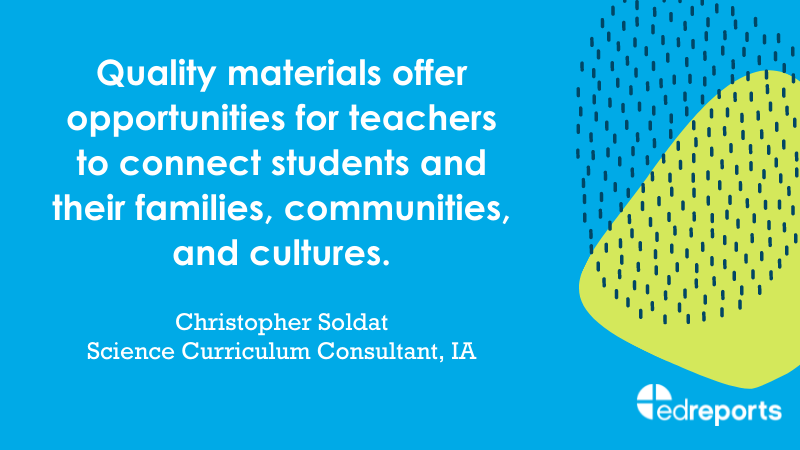
“When I was a new English Language Arts teacher, I didn’t know the research about the importance of foundational skills for students in third grade and beyond.”
Kristen Henninger, Assistant Principal, Peoria Unified School district, AZ
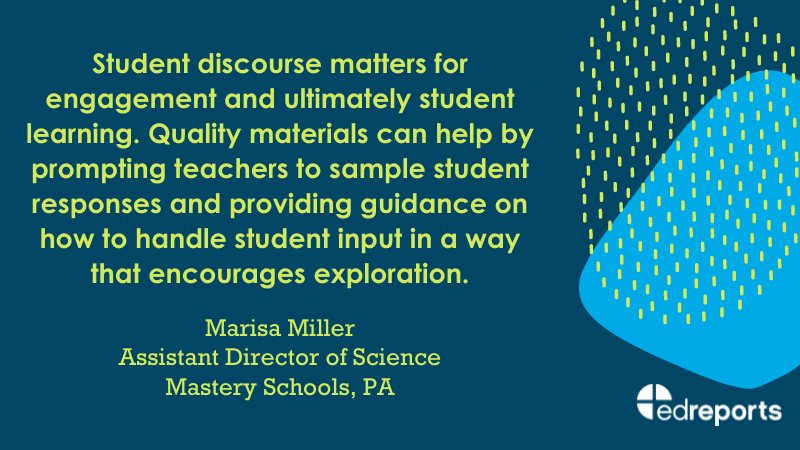
“When I was a new English Language Arts teacher, I didn’t know the research about the importance of foundational skills for students in third grade and beyond.”
Kristen Henninger, Assistant Principal, Peoria Unified School district, AZ
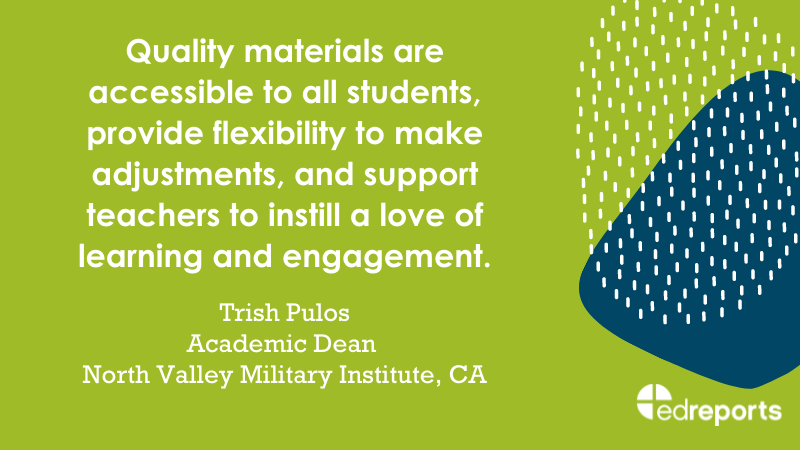
“We don’t just teach the content, we teach human beings. Dr. Gholdy Muhammad recognized in her book, Cultivating Genius: An Equity Framework for Culturally and Historically Responsive Literacy that the identities and histories of students are important. We want our students to be great thinkers and activists, but we also want them to be able to discern and read the world.”
Dr. Erika Henderson, Associate Program Director, Facing History and Ourselves, MS
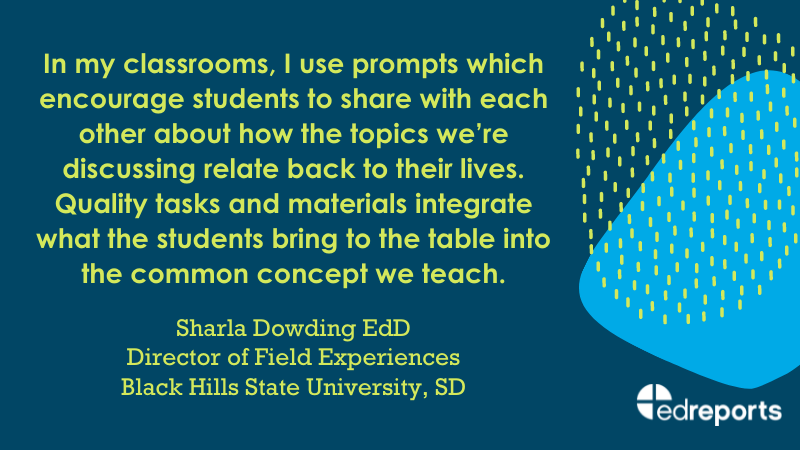
“Quality materials offer tasks for teachers that enrich the curriculum throughout the year. Great curriculum that is explained well to teachers can continue to encourage teachers especially when they are just starting out in the classroom.”
Sara Schwerdtfeger, Professor, Emporia State University, KS
